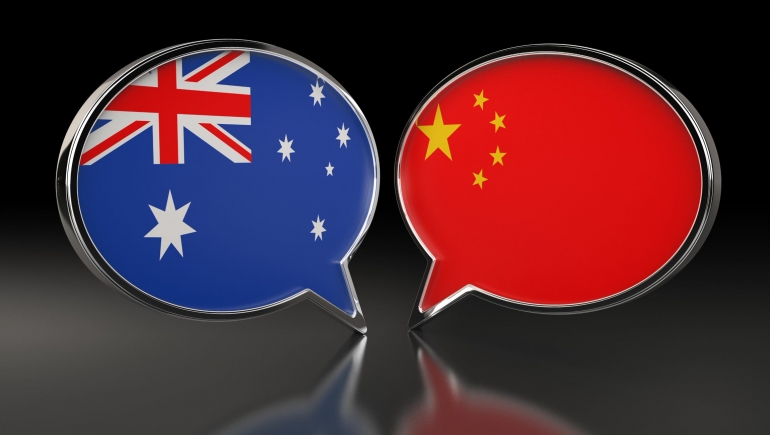Tue 08 November 2016
By Chenxi Wang
Professor Ren’s presentation reviewed investment related commitments in ChAFTA, and explored prospects of bilateral investment between China and Australia after the signature of ChAFTA. At the discussion session, Professor Ren commented broadly on China’s ongoing Market liberalization process.
Investment Related Commitments in ChAFTA
Bilateral investment between China and Australia are mostly related to services trade commitments in ChAFTA. Under the framework of ChAFTA, Australia adopted a liberal trade commitment mode -‘negative list’ commitment in a variety of services sectors. For example, in professional services, Australia only made a few reservations in the fields of legal services and real estate services. In many other sectors such as telecommunication services, financial services, distribution services and transportation services, Australia also made high-level commitments.
China adopted a less liberal trade commitment mode - ‘positive list’ commitment in a wide range of services sectors. In business services sectors such as legal services, China substantially relaxed restrictions on Australian legal services suppliers. In many other sectors such as telecommunication services, education services, and financial services, China also committed to open the market one step further for Australian investment.
In ChAFTAChina offers Australia favorable liberalization measures in the China (Shanghai) Free Trade Zone (SFTZ), especially in legal services, telecommunication services, construction services, and maritime transport services. China adopted this commitment pattern due to its unique political custom in domestic policy making process: For issues of importance, China always conducts experiments in a small geographic area and follows by replicating successful outcomes in other regions . SFTZ, established in 2013, plays an important role in experimenting market liberalization and facilitating China’s international trade and investment negotiations. As at October 2016, China has expanded those liberalization measures to Australia from SFTZ to ten FTZs across the country. In the foreseeable future, China probably will continue and enlarge trade liberalization experiments domestically and create a larger and freer market for foreign investments.
Prospects of the Bilateral Investment under the Framework of ChAFTA
The conclusion of ChAFTA will diversify current investment interests and promote the expansion of bilateral investment between China and Australia. The investment interest of Chinese enterprises has expanded from mining to emerging industries such as tourism, transportation, finance, technology, and real estate. This trend will continue. Chinese future investment in Australia is likely to be led primarily by private enterprises with Australia’s relaxation on investment review benchmark.
Australia is expected to attract an increase in investment in China, particularly in relation to professional services, medical care, aged care and financial services.. China continues to engage in creating a more prospective market for Australian investment. For instance, in order to facilitate the liberalization of governance in SFTZ, China issued a decision to exempt SFTZ from 18 national administrative regulations concerning foreign enterprises and 4 national administrative rules concerning foreign investment in July 2016.
China’s Ongoing Market Liberalization
First, the past three years’ experimentation in SFTZ demonstrates that SFTZ has made significant progress in the light of trade facilitation but stagnated in other areas. This is because, in China’s current regime, many regulated areas at local levels rely on profound and systemic reforms nationwide. For example, it’s hard to further open legal services to foreigners without complete judicial independence in China’s legal system. Market equity and equality also rely on a breakthrough in China’s ongoing state-owned enterprises reforms. Furthermore, ministries tend to resist local government’ bold liberalization suggestions due to the fear of losing administrative power. Without changes to ministries’ regulatory philosophy and more decentralization of authority to local governments, experimentation of further market liberalization at local levels presents a challenge.
Second, the external impetus will continue to play a crucial role in China’s market liberalization. China’s past experiences show that external impetus has been the driving force of China’s domestic reforms. For example, as early as the late 1970s when China began its economic and legal reform, China enacted the laws for equity joint-ventures, contractual joint-ventures and wholly foreign owned enterpreises to attract foreign investment. In contrast, China didn’t enact the corporate law on domestic enterprises until the 1980s - around one decade later than the birth of corporate law on foreign enterprises. After decades’ of market opening, China’s domestic governance is currently more penetrable by foreign pressure. For instance, envied by local governments and local enterprises which are geographicrally remote from Beijing, multinationals are often able to lobby ministries through their shortcut access. It’s most probable that the external pressure for further market opening, either from multinationals or governments of China’s trade partners, will push China’s market liberalization to new depths.
